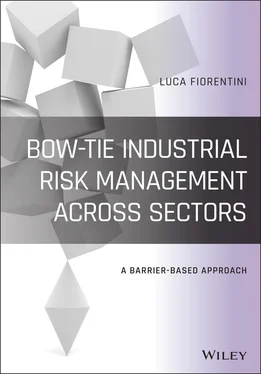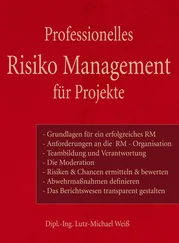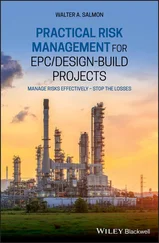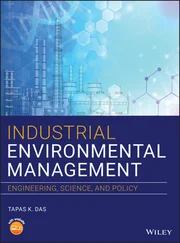Figure 170 Administering intravascular iodinated contrast media (excluding intensive care patients).
Figure 171 Applying a central venous catheter (CVC).
Figure 172 Operating on a patient.
Figure 173 Hospitalization of vulnerable elders (> 70 years) (1 of 4).
Figure 174 Hospitalization of vulnerable elders (> 70 years) (2 of 4).
Figure 175 Hospitalization of vulnerable elders (> 70 years) (3 of 4).
Figure 176 Hospitalization of vulnerable elders (> 70 years) (4 of 4).
Figure 177 Performing surgical procedures.
Figure 178 Elaboration of the threat “external corrosion” and main escalating factors and controls.
Figure 179 Link between controls and the company HSE management system procedures.
Figure 180 BFA of Flixborough (UK) incident.
Figure 181 BFA of Seveso (Italy) incident.
Figure 182 BFA of Bhopal (India) incident.
Figure 183 BFA of Piper Alpha (UK – offshore) incident.
Figure 184 BFA of Pembroke Refinery (Milford Haven) (UK) incident.
Figure 185 BFA of Texas City (US) incident.
Figure 186 BFA of Macondo (Deepwater Horizon) (US – Offshore) incident.
Figure 187 BFA of Fukishima (Daiichi) (Japan) incident.
Figure 188 Drug administration Bow‐Tie.
Figure 189 Area involved in the accident. Right, unwinding section of the line, left, the front wall impinged by flames. Source: Taken from Marmo, Piccinini and Fiorentini, 2013.
Figure 190 The flattener and the area involved in the accident. Details of the area struck by the jet fire, view from the front wall. Source: Taken from Marmo, Piccinini and Fiorentini, 2013.
Figure 191 Details of the hydraulic pipe that provoked the flash fire. Source: Taken from Marmo, Piccinini and Fiorentini, 2013.
Figure 192 Map of the area struck by the jet fire and by the consequent fire. The dots represent the presumed position of the workers at the moment the jet was released. Source: Marmo, Piccinini and Fiorentini, 2013.
Figure 193 Footprint of the jet fire on the front wall. Source: Marmo, Piccinini and Fiorentini, 2013.
Figure 194 Timescale of the accident. F1 is the time interval in which the ignition occurred. F2 is the time interval in which it is probable that the workers noticed the fire. The group 5 and group 6 events are defined as in Table 28. Source: Marmo, Piccinini and Fiorentini, 2013.
Figure 195 The domain used in the FDS fire simulations. Source: Marmo, Piccinini and Fiorentini, 2013.
Figure 196 Simulated area, elevation. Source: Marmo, Piccinini and Fiorentini, 2013.
Figure 197 Jet fire simulation results: flames at 1 s from pipe collapse. Source: Marmo, Piccinini and Fiorentini, 2013.
Figure 198 Jet fire simulation results: flames at 2 s from pipe collapse. Source: Marmo, Piccinini and Fiorentini, 2013.
Figure 199 Jet fire simulation results: flames at 3 s from pipe collapse. Source: Marmo, Piccinini and Fiorentini, 2013.
Figure 200 Jet fire simulation results: temperature at 1 s from pipe collapse. Source: Marmo, Piccinini and Fiorentini, 2013.
Figure 201 Jet fire simulation results: temperature at 2 s from pipe collapse. Source: Marmo, Piccinini and Fiorentini, 2013.
Figure 202 Jet fire simulation results: temperature at 3 s from pipe collapse. Source: Marmo, Piccinini and Fiorentini, 2013.
Figure 203 Scheme of the hydraulic circuits with two‐position (a) and three‐position (b) solenoid valves. Source : Marmo, Piccinini and Fiorentini, 2013.
Figure 204 Event tree of the accident. The grey boxes indicate a lack of safety devices. Source: Marmo, Piccinini and Fiorentini, 2013.
Figure 205 Damages on the forklift.
Figure 206 Frames from the 3D video, reconstructing the incident dynamics.
Figure 207 Bow‐Tie diagram of the ThyssenKrupp fire.
Figure 208 Twente stadium roof collapse Tripod Beta analysis.
Figure 209 Water treatment Bow‐Tie analysis.
Figure 210 Timeline of the sample (developed with CGE‐NL IncidentXP).
Figure 211 Possible RCA of the sample (developed with CGE‐NL IncidentXP).
Figure 212 Possible Tripod Beta of the sample (developed with CGE‐NL IncidentXP).
Figure 213 Possible BFA of the event (developed with CGE‐NL IncidentXP).
Figure 214 Bow‐Ties developed to assess fire risk in multiple railway stations.
Figure 215 Fire load.
Figure 216 Bow‐Tie worksheet developed by TECSA S.r.l. and Royal Haskoning DHV to quantify a Bow‐Tie scheme with a LOPA approach. Not real scores and data presented in the image.
Figure 217 Barriers/protection layer scores.
Figure 218 Weakest barriers and the public.
Figure 219 Bow‐Tie model for fire risk assessment in PV plants.
Figure 220 Map of ceraunic density in Italy.
Figure 221 Annual average temperature in Italy.
Figure 222 Deming Cycle from a barrier‐based perspective.
Figure 223 Bow‐Tie core elements and general structure.
Figure 224 Bow‐Tie guiding principles.
Figure 225 BFA core elements.
Figure 226 Incident barrier state.
Figure 227 Incident barrier state decision support tree.
Figure 228 BFA guiding principles.
Figure 229 Classification of human failure.
Figure 230 Fault tree analysis, current configuration (ANTE).
Figure 231 Fault tree analysis, better configuration (configuration A).
Figure 232 Fault tree analysis, the best configuration (POST configuration).
Figure 233 Frequency estimation of the scenario “Oxygen sent to blow down, during start up of reactor of GAS1”.
Figure 234 The Swiss Cheese Model by James Reason. Source: Reason, 1990.
Figure 235 Level 1: Unsafe acts.
Figure 236 Level 2: Preconditions.
Figure 237 Level 3: Supervision issues.
Figure 238 Level 4: Organizational issues.
Table 1Applicability of tools for risk assessment.
Table 2 Example of “what‐if” analysis. Source: Adapted from Assael, M. and Kakosimos, K., 2010.
Table 3 Guidewords for HAZOP analysis.
Table 4 Extract of an example of HAZOP analysis. Adapted from Assael and Kakosimos (2010).
Table 5 Subdivision of the analyzed system into areas.
Table 6 Hazards and assumed event in HAZID.
Table 7 List of typical consequences.
Table 8 HAZID worksheet.
Table 9 Different classification of barriers as physical or non‐physical.
Table 10 Comparison of defined hazards with insufficient detail and optimal degree for evaluation.
Table 11 Comparison of defined top events with insufficient detail and with an optimal degree for evaluation.
Table 12 Comparison of defined causes with insufficient detail and with an optimal degree for evaluation.
Table 13 Comparison of defined consequences with insufficient detail and with an optimal degree of evaluation.
Table 14 Barrier Types.
Table 15 Quality scores and judgments on the effectiveness of barriers.
Table 16 Standard Performance Scores (PS).
Table 17 Definition of BRFs in Tripod Beta.
Table 18 Example of spreadsheet event timeline.
Table 19 Example of Gantt chart investigation timeline.
Table 20 Barrier function score (FS).
Table 21 Barrier consequence of failure score (CS).
Table 22 Barrier redundancy score (RS).
Table 23 Barrier criticality ranking.
Table 24 Barrier criticality assessment example.
Table 25 Interpretation of the barrier‐based audit response histograms.
Table 26 Survey team members should and should not.
Table 27 General information about the case study.
Table 28 Record of the supervisor systems (adapted from Italian). Source: Marmo, Piccinini and Fiorentini, 2013.
Читать дальше












